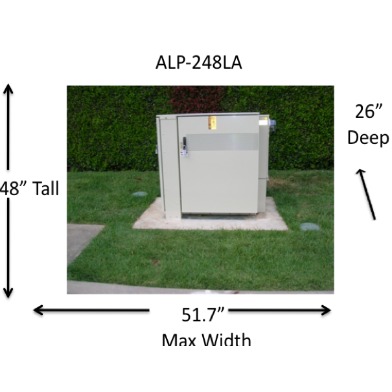 Call it a San Francisco standoff. Instead of two combatants facing mutually-assured destruction with guns, in this town it’s a showdown with litigation. And the Board of Supervisors blinked.
Call it a San Francisco standoff. Instead of two combatants facing mutually-assured destruction with guns, in this town it’s a showdown with litigation. And the Board of Supervisors blinked.
After a five-hour hearing, the Board on Tuesday voted to delay for one month its decision on whether to allow telecommunications giant AT&T to go ahead with installing 726 large utility cabinets on city streets, necessary infrastructure for its newest high-speed Internet and digital phone products. The Planning Department ruled that the utility cabinets could be installed on public streets and other right-of-ways without AT&T paying for a costly and time-consuming environmental impact review. Several citizens’ groups, led by San Francisco Beautiful, oppose the utility cabinets — calling them “blight” — and filed an appeal asking the Board to force AT&T to conduct an EIR.
“We want this technology in San Francisco — it’s pretty darn important that we have it here,” said Wiener, who noted that in the end “community participation” — allowing various neighborhoods to determine whether or not they want the boxes — might be the best resolution. “But what that would look like” is unclear, and will hopefully be decided in the next month.
No matter what the Board did Tuesday, it appeared both AT&T and San Francisco Tomorrow were prepared to file suit. It was Castro District Supervisor Scott Wiener who suggested the vote be delayed a month so that the two parties could cool off and find some sort of common ground (and to spare the city at least some litigation).
Installing the boxes would allow many more San Franciscans a second choice in Internet/cable providers. Most homes must use Comcast. AT&T would install its boxes next to existing infrastructure.
As first reported by The Appeal, this is the second time AT&T has attempted to bring its newest Internet/cable product to San Francisco. San Francisco Beautiful successfully blocked AT&T two years ago, leading the company to install the U-Verse boxes in 260 other California cities before returning to SF to try again. The demand is here, according to the company. “Not a week goes by without someone asking me, ‘When are we going to get U-Verse?'” said Ken McNeely, AT&T’s president of external affairs.
San Francisco Tomorrow’s appeal was two-pronged: that the Planning Department’s decision to not require an EIR was “unusual,” and that the installation of 726 new utility boxes has a negative cumulative impact. Both arguments were roundly dismissed by Supervisor Sean Elsbernd, a backer of AT&T’s scheme and the lone supervisor to vote against the continuance.
“There are tens and tens of thousands of utility boxes out there right now,” he said. “Adding 726 to tens upon tens of thousands does not strike me as unusual.”
AT&T’s opponents suggested that the boxes should be built on private property if built at all. To force AT&T to do so would be expensive and onerous — and would result in a lawsuit, the company warned.
“You can’t deny us access to the right of way without some extensive legal debate,” AT&T attorney Amanda Monchamp told the Board. “Your staff has found that — and 260 other jurisdictions have found — that we are not required under the law to perform an EIR.”
Milo Hanke, past president of San Francisco Beautiful, seemed equally resolute in interviews with local media.
“Just get them [the boxes] the hell out of our way,” he told The Examiner on Friday.
Want more news, sent to your inbox every day? Then how about subscribing to our email newsletter? Here’s why we think you should. Come on, give it a try.









